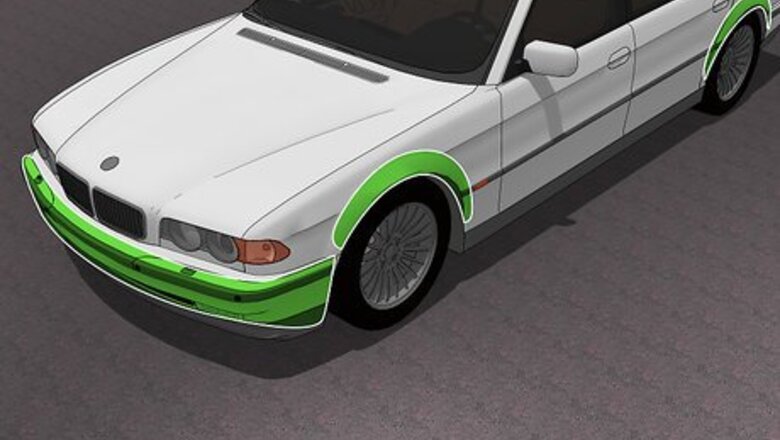
views
Checking the Car for Physical Damage
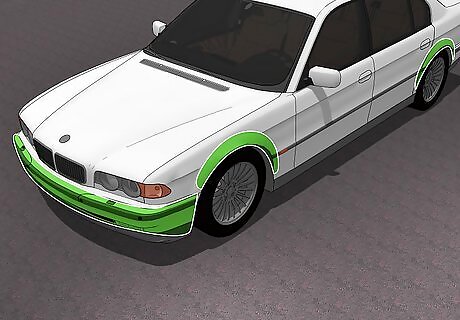
Check the fender and bumper for cracks. Examine both ends of the vehicle and look for any cracks or patched areas. Fenders and bumpers break easily in a collision because they are often made of lightweight or plastic composite material. Run your hands along the vehicle to check for dents, cracks, or other damage. Breakage or repairs to the fender or bumper is a good indicator of further car accident damage.Tip: Run the palm of your hand down the body panels of the car and around the corners of the fender and bumper. A car with accident damage will have bumps or uneven spots from filler used to repair damaged areas.
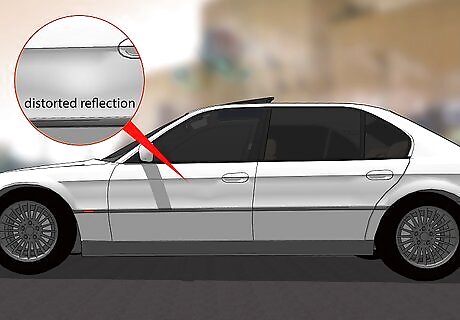
Assess the car's body lines to check for replacement parts. Crouch down so you're eye level with the body of the car. Look along the main line down the side of the car's body. This line should be straight and even and the car's paint should reflect normally. An uneven line or distorted reflection indicates that body panels of the car have been replaced or hammered out due to body damage. While different panels don't necessarily mean that the car is in bad shape, it does let you know that the car has been worked on before. The more a car has been worked on, the lower its price should be.
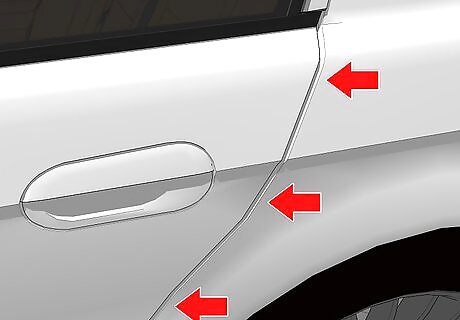
Examine panel and door gaps to see if they fit together. Look at the gaps between each door and the adjoining body panel. The gaps should be straight and have an even width from top to bottom. A car that has had auto accident damage will have uneven gaps due to misalignment or replaced panels or doors. The hood, doors, and trunk should all be flush with the other panels when closed. If they are not, that means there was some body repair to the car.

See if the car has been repainted. Look closely along the edges of the car's doors and body panels for any nicks, scratches or uneven paint areas. Signs of a different color paint underneath could mean that the car has been repainted after an accident or that a door or panel was replaced and repainted to match the rest of the car. Fresh paint might have a different texture than an older paint job. Signs of sanding during repair might also be visible through paint, so look for sanded areas when you inspect the paint.
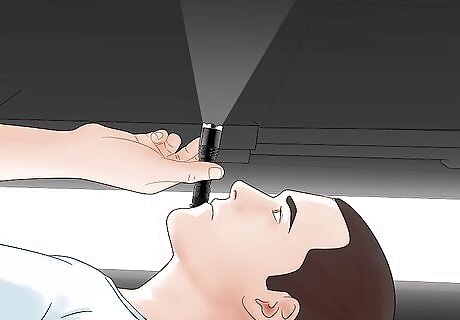
Inspect the underbody of the car to check for damage. Take a flashlight and slide yourself underneath the car to inspect the undercarriage for damage. Shine the light on every part of the underside of the car, checking for rust, excessive salt buildup, or a bent chassis. Run your hands along the underside of the car to feel for rust and dents.

Have a mechanic check the car before you buy it. It's possible that a VIN report comes back clean but the car itself has been repaired at some point. If this is the case, it's most likely because the repair was self-paid instead of paid in part through an insurance company. Go to your local mechanic and ask for a full body inspection. The mechanic will inspect the exhaust systems, brakes, steering and suspension, and other important systems in the car. This might cost between $150 and $250. While a vehicle history report is incredibly useful, it should not be the only thing you use to make your decision on buying a used car. A combination of a report, a self-inspection, and a professional inspection is your best bet for making an intelligent purchase.Tip: Have an independent mechanic take a look at your car. This person has no attachment to the vehicle and doesn't care about selling it for a specific price, so they'll give you a completely honest assessment.
Obtaining a Vehicle History Report
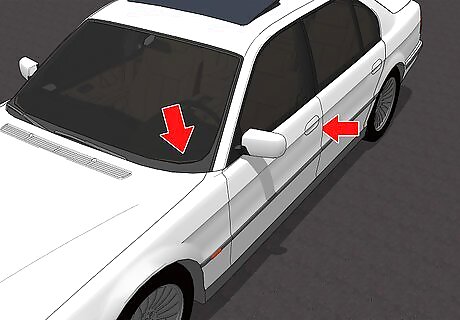
Obtain the car's Vehicle Identification Number (VIN). Use the car's vehicle identification number to see if it was ever wrecked, stolen, flood-damaged, or recalled. A VIN has 17 characters and is made up of both numbers and capital letters. The VIN is located on the dashboard of the driver's side of the car. You can view it by standing outside the vehicle and looking at the driver's side corner of the dashboard where it meets the windshield. You will use that number to search the car's history on various websites. If you can't find the VIN on the dashboard, open the door on the driver's side and look where the door latches when it's closed. The VIN number should be displayed here. If the VIN is fewer than 17 characters, the used car was made before 1981 and the information on the car will be limited.
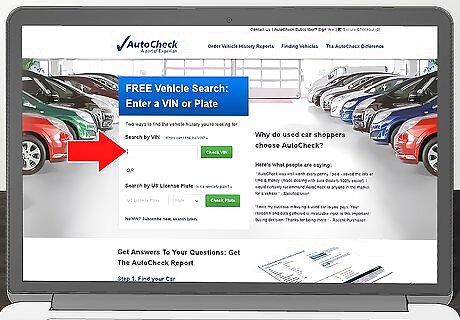
Go to AutoCheck, CarFax, or iSeeCars to type in the car's VIN. These are 3 of the most well-known companies that provide vehicle history reports. The search bar to type in the VIN is front and center when you go to these websites. When you type in the VIN, you'll get vehicle reports from over the years. AutoCheck and CarFax require you pay for the vehicle history report, while iSeeCars provides the information for free. Go to https://www.autocheck.com/vehiclehistory/?siteID=0 and type in the VIN. You'll get a report that covers everything from major accidents to flood damage. Head over to https://www.carfax.com/vehicle-history-reports/ and type in the VIN. You'll find up-to-date information on the vehicle's history. Use https://www.iseecars.com/vin to get vehicle information for free. You'll get information on the car's condition as well as dealer analysis.Tip: If you're using CarFax or AutoCheck, you can also search by license plate number and state if you don't have the VIN.
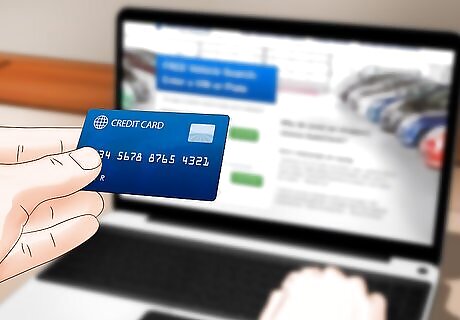
Pay for the vehicle history report to get all of the car's information. A single vehicle history report from CarFax costs around $40. Unlimited reports for a month will cost closer to $100. For AutoCheck, the price is $24.99 plus taxes for 1 report. Type your credit card information into the site and then download the file that comes up. While iSeeCars gives you a vehicle history report for free, it doesn't have nearly the information that AutoCheck and CarFax reports do. It is recommended you pay for a report to make the best decision possible.
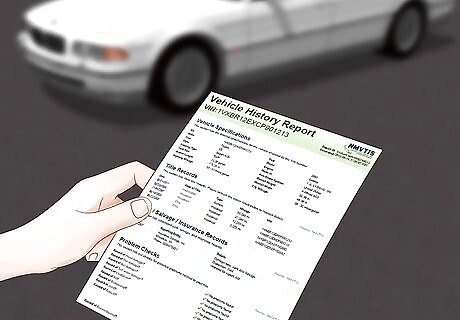
Look for accident history, mileage, and work done on the car. Use the vehicle history report to see if the car has been damaged and/or repaired, how long it's been running, and other helpful information. You can see every oil change, inspection, and accident the car has been through and you can use this information to get the best price on the car. A big part of buying a used car is haggling for the right price. With a vehicle history report, you can take this information to the dealer and explain why you think a certain price is best.



















Comments
0 comment